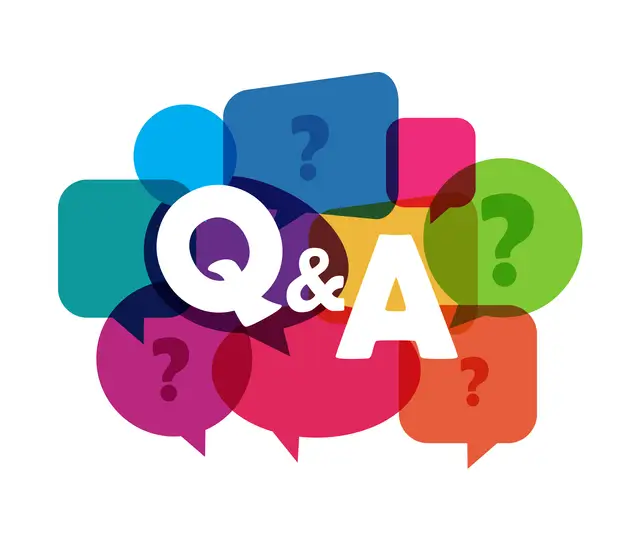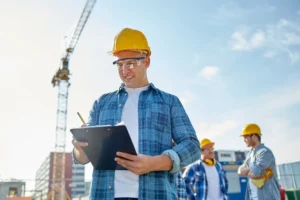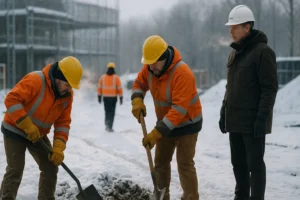Studying for your OSHA certification doesn’t have to be a daunting task. In this blog, we’ll guide you through an OSHA practice test featuring quiz questions and answers to help you assess your knowledge and pinpoint areas for improvement.
Whether you’re preparing for OSHA 10 or 30-hour training, these sample questions will offer valuable insights and preparation to help you pass the exam and ensure adherence with workplace safety regulations.
Why Are Practice Tests Important?
When you enrol in an OSHA Outreach course, you must pass a quiz at the end of each lesson. Each OSHA quiz serves as a safety practice test for that specific section of the course.
These quizzes prepare you for the comprehensive OSHA test required to obtain your DOL card. If you’re feeling anxious about passing the exam, there are numerous resources online where you can find practice OSHA tests (including some provided below!).
Below are several sample OSHA questions and answers focused on construction standards.
Question 1: OSHA is an acronym that stands for which Federal Government agency?
a. Occupation Services and Hiring Administration
b. Occupational Safety and Health Administration
c. Occupation Selection and Health Administration
d. Occupational Surveillance and Hiring Administration
Correct Answer: b. Occupational Safety and Health Administration
Explanation: OSHA stands for the Occupational Safety and Health Administration, which is a federal agency responsible for ensuring safe and healthy working conditions.
Question 2: OSHA is responsible for
a. Improving worker health and safety protection
b. Ensuring that workers are paid properly
c. Ensuring that workers have benefits e.g., paid leave, holidays
d. All of the above
Correct Answer: a. Improving worker health and safety protection
Explanation: OSHA’s primary role is to improve worker health and safety by setting and enforcing standards, rather than directly managing wages or benefits.
Question 3: OSHA is responsible for
a. Developing job safety standards
b. Developing job health standards
c. Inspecting employer worksites
d. All of the above
Correct Answer: d. All of the above
Explanation: OSHA is responsible for developing both job safety and health standards, as well as inspecting employer worksites to ensure adherence with these regulations.
Question 4: PPE-related training must cover the following items:
a. When and what kind of PPE is necessary
b. How to properly don, doff, adjust, wear, maintain, and dispose of PPE
c. The limitations of the PPE
d. The brand name of the PPE
Correct Answer: d. The brand name of the PPE
Explanation: While PPE training must cover when and what kind of PPE is necessary, how to use it properly, and its limitations, it does not need to focus on the specific brand names of the equipment.
Question 5: Protective footwear purchased after July 5, 1994 shall adhere with:
a. ANSI Z41-1991
b. Red Wing manufacturer standards
c. Your current company standards
d. Whatever your supervisor says is acceptable
Correct Answer: a. ANSI Z41-1991
Explanation: Protective footwear purchased after this date must adhere with ANSI Z41-1991 standards, which set the criteria for safety footwear.
Question 6: Companies are required to:
a. Provide certain types of PPE at no cost to the employee.
b. Train employees on the use of PPE.
c. Monitor and enforce the use of required PPE.
d. All of the above.
Correct Answer: d. All of the above.
Explanation: Companies are legally required to provide necessary PPE at no cost, train employees on its proper use, and ensure adherence through monitoring and enforcement.
Question 7: PPE is Required:
a. When the employee has less than five years of experience
b. When it’s raining
c. When on a job site
d. Where there is an exposure to hazardous conditions or where it has been determined that a hazard exists
Correct Answer: d. Where there is an exposure to hazardous conditions or where it has been determined that a hazard exists
Explanation: PPE serves as protection where exposure to hazardous conditions may arise that can injure employees.
Question 8: The most common causes of construction fatalities are as follows:
a. Electrocution
b. Being struck by a construction vehicle or car
c. Falls
d. Being hit by equipment or machinery.
Correct answer: c. Falls
Explanation: Falls have forever been reported to be the foremost contributor to fatalities in construction, constituting a substantial share of fatalities in construction.
Question 9: Roofs with slopes over 4 in 12 require
a. Guardrail, toe boards, and safety net
b. Qualified person to be present on the job
c. A minimum of two workers present at all times
d. None of the above
Correct Answer: a. Guardrail, toe boards, and safety net
Explanation: Roofs with a slope greater than 4 in 12 will require measures of fall protection like guardrails, toe boards, and safety nets so that the workers do not fall.
Question 10: Conditions which can cause falling injury or death
a. Lack of attention to surroundings
b. Failure to use protective equipment
c. Improper use of tools
d. All of the above
Correct Answer: d. All of the above
Explanation: All the above factors accordingly can increase the risk of falling injuries and fatalities. Lack of attention, failure to use protective equipment, or improper use of tools makes a work environment extremely unsafe.
Question 11: OSHA mandates that employers must provide fall protection if an employee could unintentionally
a. Walk into an opening in the floor or roof
b. Fall from an open-sided platform
c. Fall into machinery or a pit (such as a moving belt or stripping tank)
d. All of the above
Correct Answer: d. All of the above
Explanation: OSHA requires that fall protection measures be in place for any scenario where an employee is at risk of falling, including into openings, off platforms, or into machinery and pits.
Question 12: Penalties for breaching OSHA standards or regulations
a. Range from warnings to significant monetary fines
b. Can be appealed
c. May involve criminal charges and imprisonment
d. All of the above
Correct Answer: d. All of the above
Explanation: Violations of OSHA standards can result in a variety of penalties, including warnings, fines, the option to appeal, and even criminal charges leading to imprisonment.
Question 13: Fatal accidents in the construction industry are most frequently caused by
a. Electrocution
b. Being run over by construction equipment or vehicles
c. Falls
d. Being struck by equipment or machinery
Correct Answer: c. Falls
Explanation: Falls are the leading cause of fatalities in construction, representing a significant portion of construction-related deaths.
Question 14: Roofs with a slope greater than 4 in 12 require
a. Guardrails, toe boards, and safety nets
b. A qualified individual to be present on the job
c. At least two workers are to be on-site at all times
d. None of the above
Correct Answer: a. Guardrails, toe boards, and safety nets
Explanation: For roofs with a slope exceeding 4 in 12, fall protection measures such as guardrails, toe boards, and safety nets are necessary to ensure worker safety.
Question 15: Protective helmets acquired after July 5, 1994, must adhere to ANSI Z89.1-1986.
A. True
B. False
Correct Answer: A. True
Explanation: Helmets purchased after this date are required to meet the ANSI Z89.1-1986 standards for safety and protection.
Join Us Today!
As an OSHA-authorised provider of online courses, we offer OSHA 10 and 30 training for both Construction and General Industries. Equip yourself for any challenges ahead — enroll in the training programs today!





